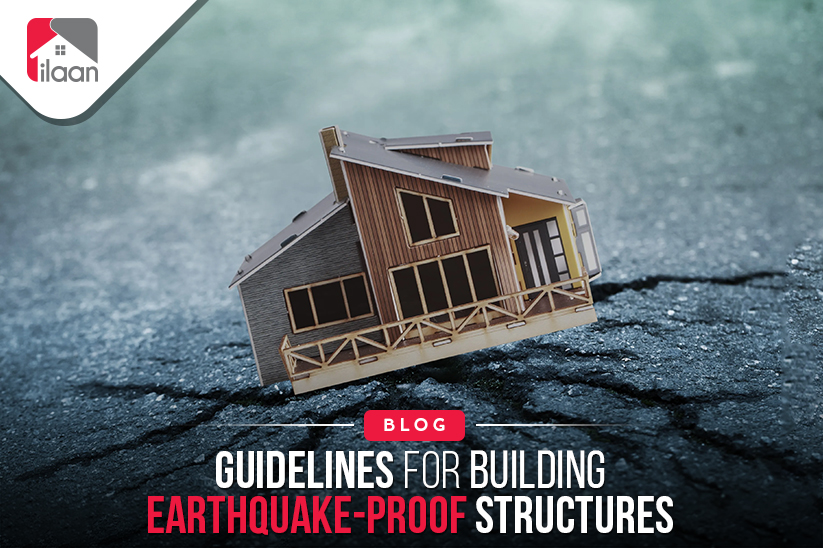Even with today's cutting-edge technology, natural disasters remain unpredictable. Natural disasters offer a serious concern since they can result in extensive damage, including harm to buildings and casualties. Tremors caused by the seismic activity of tectonic plates, which can have disastrous effects, are a distinctive feature of earthquakes in particular. It is essential to construct earthquake-resistant buildings in order to avoid any negative repercussions.
Traditional construction techniques are still in use, but to make sure that buildings can resist natural disasters, architects, construction firms, and other industry participants must prioritize sustainable building principles.
5 Guidelines to Design Earthquake-Proof Structures
1. Employ materials that are earthquake resistant
The kind of materials chosen during construction can have a big impact on how earthquake-resistant a building is. Large quantities of energy are absorbed by materials with great ductility without breaking. As a result, building materials like reinforced steel, concrete, and wood can increase a structure's strength and earthquake resistance.
Concrete can help prevent buildings from collapsing, while reinforced steel can aid in absorbing shock waves during an earthquake. Timber can also provide a building's structure flexibility, allowing it to bend and absorb seismic shockwave energy.
2. Install earthquake dampers
With the aid of seismic dampers, an earthquake's energy can be absorbed, protecting the building's stability. The impact of the earthquakes is lessened by these systems' use of hydraulic or mechanical mechanisms to dissipate energy. The overall earthquake resistance of a building can be considerably increased by installing seismic dampers. They come in a variety of sizes to manage varying force levels and can range from fluidics-based systems to gas-driven shock isolation systems.
3. Establish a Firm Foundation
The foundation, or the backbone, of a building, is the most important component. In particular during earthquakes, the foundation is essential to the overall stability of a building. Even with a small tremor, a weak foundation might cause a building to collapse. A comprehensive investigation must be done to confirm that the land is stable and capable of supporting the building's foundation before construction can start.
High-quality materials should be used to construct the foundation. In order to keep the building's base away from the soil and increase its resistance to seismic forces, this can be accomplished by either putting the structure on pads that hold it off the ground or by employing a sturdy foundation slab with an intervening cushion of sand.
4. Strengthen Roof and Walls
Walls and roofs are frequently subjected to the extreme pressure that can lead them to collapse during an earthquake. A building's ability to withstand earthquakes can be considerably increased by strengthening its walls and roof. This can be accomplished via diaphragms, shear walls, braced frames, or seismic-resistant frames, which divert seismic pressures by transferring lateral forces to vertical-resistant areas of the building.
Using lightweight roofing materials can also help lighten the structure as a whole, preventing the roof from falling during an earthquake. Buildings that are shorter than those that are taller need additional structural reinforcing.
5. Consult an expert for advice
An earthquake-proof building takes specific knowledge and skill to design and build. It is necessary to seek the advice of experts with knowledge of designing and constructing disaster-resistant constructions. On the most effective methods for creating an earthquake-proof structure, architects, engineers, and construction firms can provide insightful information and recommendations.
WRAP IT UP
In a nutshell, it is crucial to construct earthquake-proof buildings, especially in earthquake-prone locations. Following these five suggestions will help architects, building companies, and other parties involved in the construction services make sure that structures are earthquake-resistant and weather-resistant. In addition to being a wise investment in safety, creating earthquake-resistant structures supports sustainable building methods that are environmentally benign and contribute to a better future for all.










